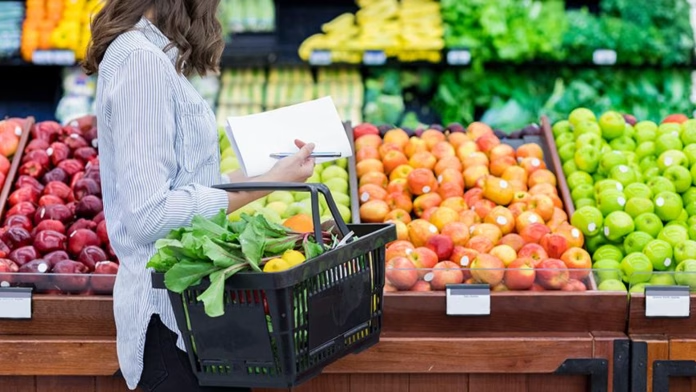Basic food items such as cereals and pulses are not expected to provide immediate relief due to rising global prices and low domestic cultivation.
A research report by brokerage firm Prabhudas Lilladher suggests that there is an increased probability of inflation staying above 7 percent in August.
During July, India experienced a notable rise in CPI inflation, hitting a 15-month high at 7.44 percent. This marked a substantial increase from June’s 4.81 percent. These figures highlight two main observations regarding July’s inflation scenario. Firstly, the main factor behind this surge in inflation was the escalation in food prices.
Secondly, the inflation is not solely linked to vegetables, particularly tomatoes. Instead, a broader array of food products, encompassing cereals, pulses, and spices, have collectively contributed to the escalation in prices.
The report stated that the combination of climate risks posed by unpredictable weather and fluctuating rainfall patterns, coupled with an increase in global food inflation, led to a significant and unexpected surge in domestic food prices in July 2023.
“El Nino can turn out to be a potential potboiler for food inflation in coming months. We have seen sharp increase in food inflation in last two months mainly due to damage to a few crops and unseasonal weather pattern,” the report said.
Pulses cultivation has decreased by 9.2 percent, and oilseeds sowing is reduced by 1.7 percent. This is expected to have an effect on the production of moong, toor, urad, and spices.
“Dry climate in the coming couple of months can impact height, density and yields of pulses in a major way as their cultivation is done more in the rain-fed areas. We note that prices of some of the spices are on the boil and don’t rule out higher prices of pulses and oilseeds,” the report said.
“We believe high inflation can be a political hot potato in an election year, forcing govt to slow down capex,” it added.
According to a report by Motilal Oswal Financial Services, the monsoon in August has deviated considerably from the long-term average, experiencing a shortfall of 30 percent.
Especially in the southern regions of India, there have been noticeably arid conditions.
After starting the month on a positive note with a 5 per cent surplus due to a wet July, the monsoon took a downturn in August, with an overall deficit of 7 per cent as on August 20, the report said.
The Northwest region (6 percent above normal) has encountered rainfall exceeding the usual levels, while Central India (2 percent below normal), the South Peninsula (13 percent below normal), and the Eastern and Northeastern regions have observed inadequate rainfall patterns (20 percent below normal).
El Nino has progressed from a “weak” to a “moderate” state, as indicated by the most recent report from US weather agencies. According to this update, there is a 66 percent likelihood of it intensifying into a strong event later in the year.
As of August 18, Kharif sowing is slightly elevated by 0.1 percent compared to the previous year. The expanse dedicated to paddy cultivation has grown by 4.3 percent in comparison to last year. However, the cultivation area for pulses remains notably lower by 9.2 percent compared to the preceding year. Additionally, production of jute, cotton, and oilseeds has also experienced a decline.
According to the report, coarse cereals (up by 1.6 percent year-on-year) and sugarcane (up by 1.3 percent year-on-year) are maintaining their positive performance.
The reduction in irrigation coverage across key states might exert a more noticeable influence on pulses production. Inflation within the pulses category has almost doubled over the last five months. Inadequate rainfall, leading to decreased cultivation of rice and pulses, has contributed to the upward surge in prices.
Rice holds a weight of approximately 4.4 percent, while pulses account for around 6 percent in the overall CPI basket.
Sujan Hajra, Chief Economist and Executive Director at Anand Rathi Shares and Stock Brokers, mentioned that the significant increase in food inflation and other potential factors contributing to upward inflationary pressures could prompt the RBI to consider a minimal rate hike, primarily to stabilize inflationary expectations.
This is even more probable due to the RBI’s perspective that inflation is predominantly a monetary phenomenon, necessitating monetary policy measures for its regulation, regardless of whether it stems from supply-side or demand-side factors.
These have adverse implications for the financial markets, Hajra said.
The case for a rate cut in the next 12 months seems to have vanished with adverse consequences for the financial markets, including debt and equity.
Apart from high food inflation, the sharp jump in global crude oil and grain prices are serious concerns. While edible oil inflation is currently extremely benign, the global El Nino effect can change the situation. Progressive softening of core inflation is a silver lining.
At 7.4 per cent in July, India recorded the highest inflation in the last 15 months. On an annualised basis, food inflation jumped nearly 70 per cent and fuel more than 20 per cent, resulting in an over 50 per cent jump in non-core inflation. The silver lining included the year on year fall in fuel and core inflation, Hajra added.
The year-on-year food inflation jumped from 4.7 per cent in June to 10.6 per cent in July.
While above 200 per cent inflation in tomato was a major driving force, many other items under fruit and vegetables recorded high inflation chiefly on account of weather disturbances in the recent past, Hajra said.





